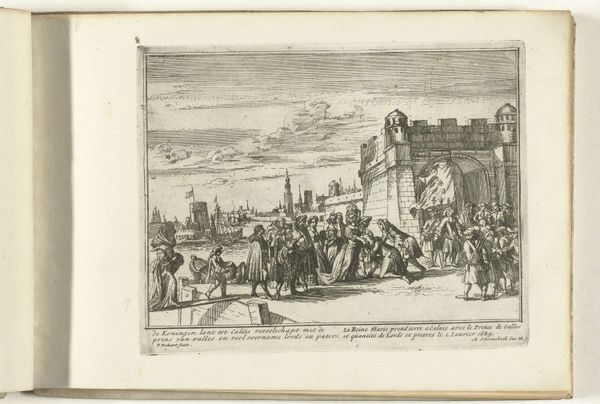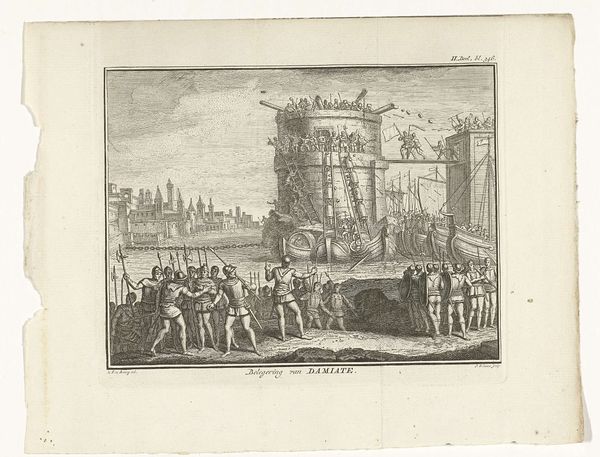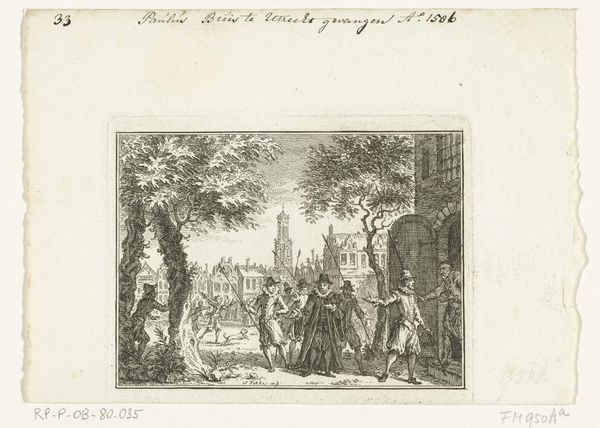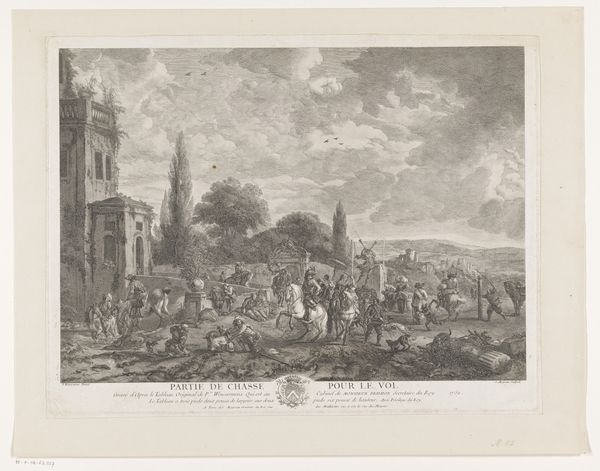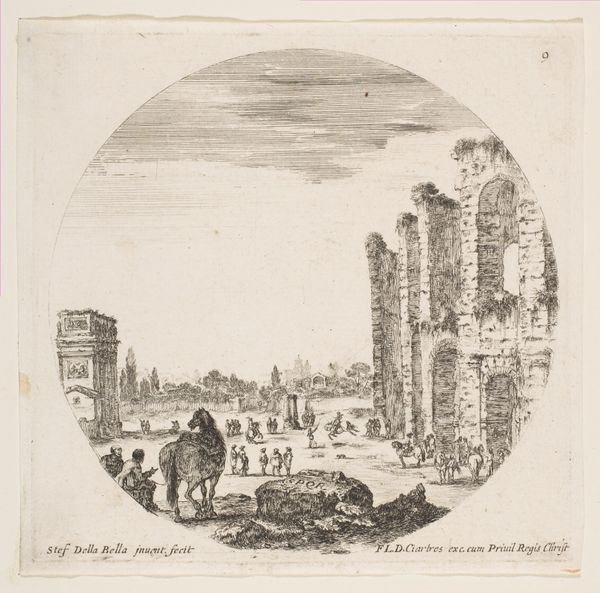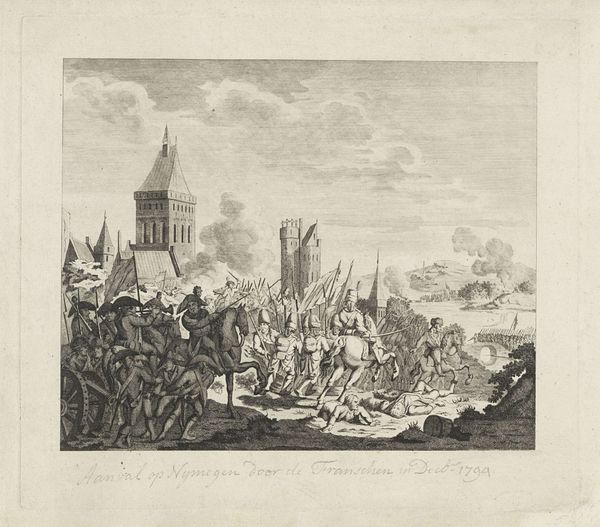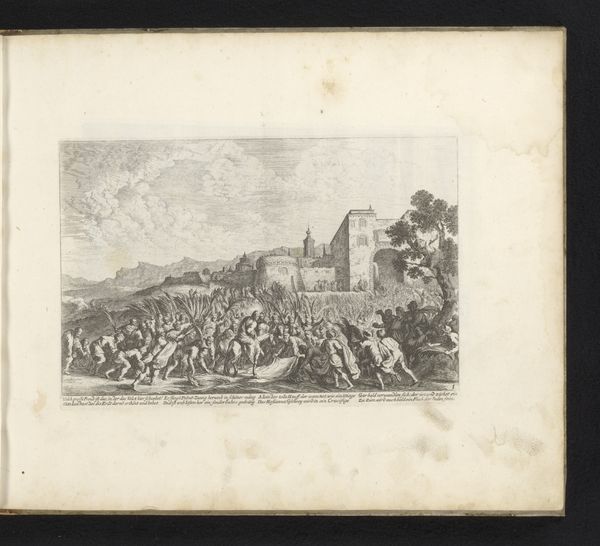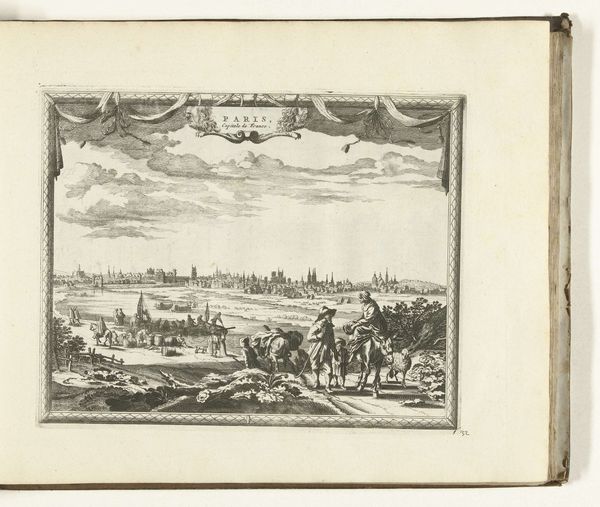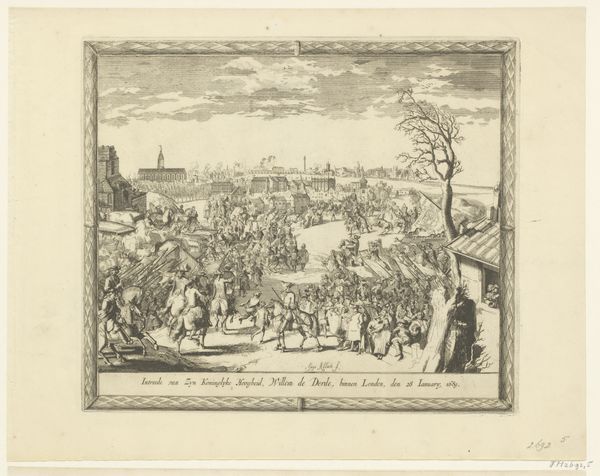
Dimensions: height 90 mm, width 111 mm
Copyright: Rijks Museum: Open Domain
Editor: This print, titled "Koning Eduard IV vertrekt naar Engeland, 1471," by Simon Fokke, was made between 1782 and 1784 using engraving. I'm struck by how it presents history – almost like a staged scene, yet with many people, ships, and an impressive landscape. What do you see in this piece in terms of its historical and cultural importance? Curator: What interests me is not necessarily its accuracy, but its *presentation* of history. Fokke created this image during a time of rising nationalism, using the Baroque style to depict the past as glorious and dramatic. How do you think an image like this might have functioned politically? Was it simply illustrating a historical event, or doing something more? Editor: It feels a bit propagandistic. The departure seems staged to highlight Edward's power, especially if the nationalism of the time played a role. So, the print's less about the specific event and more about fostering a certain image of English leadership. Curator: Precisely. Think about where this image would be circulated: possibly printed in books for the rising literate middle class or hung in public spaces. Fokke uses this event from the Wars of the Roses to construct a heroic narrative and probably appeal to sentiment regarding a stable English identity, especially when you consider it was made close to the American Revolution. It links the past with the present by evoking emotion. Notice how Edward is positioned centrally with visual order and how his departure signifies a renewal of power, or legitimacy of a new, presumably stable English future? Editor: I hadn't considered its circulation and the rising literate middle class, and that shifts my perspective completely. The image becomes less about historical documentation and more about cultural engineering, and communicating national aspirations. I see the artist’s visual language and the intended audiences role in cementing its relevance in time. Curator: And by considering it, you also get to examine how these themes extend to shaping later art.
Comments
No comments
Be the first to comment and join the conversation on the ultimate creative platform.

